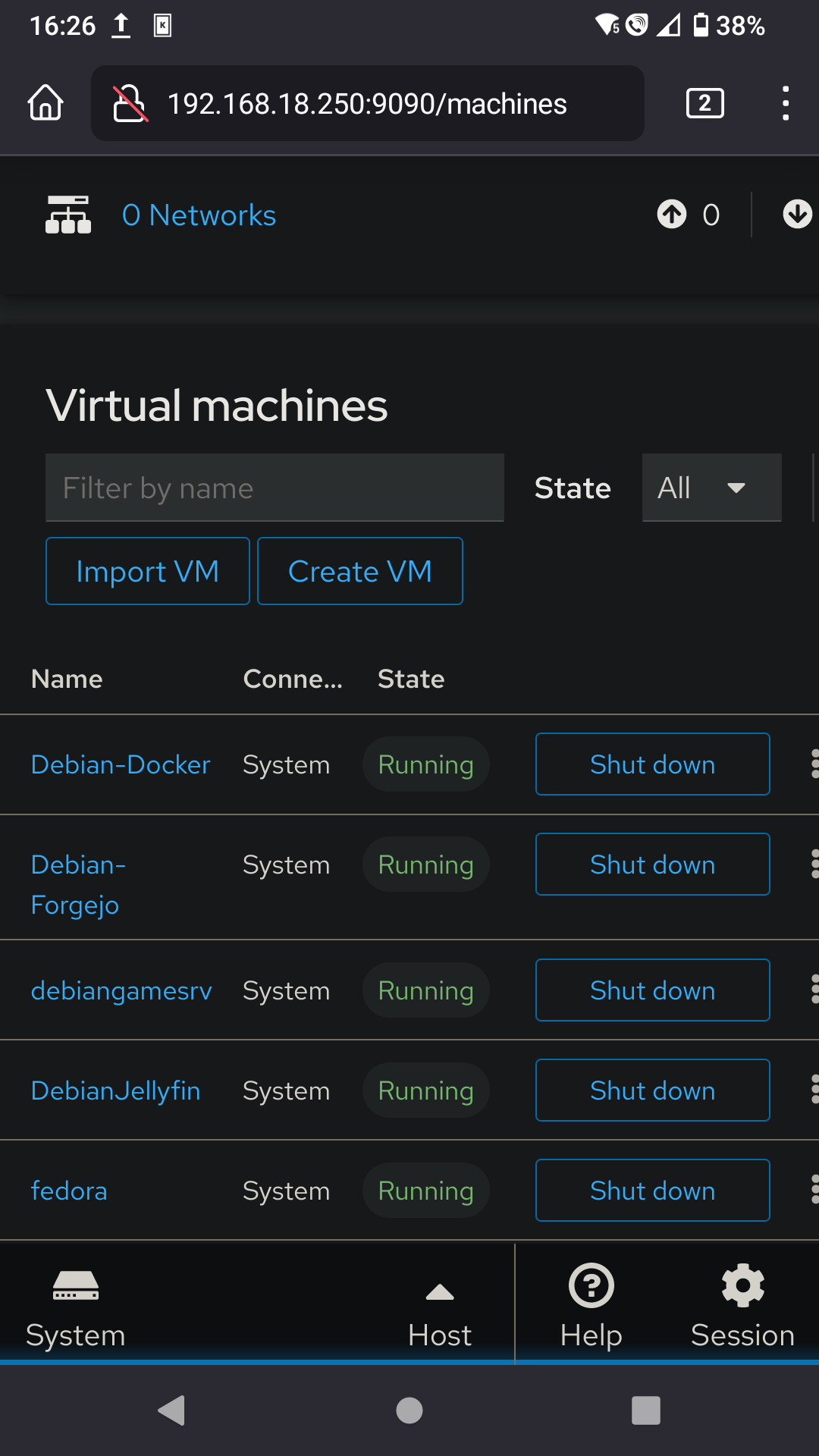#nobridge
- 2 Posts
- 38 Comments

 11·9 months ago
11·9 months agoAs part of the transition of perpetual licensing to new subscription offerings, the VMware vSphere Hypervisor (Free Edition) has been marked as EOGA (End of General Availability). At this time, there is not an equivalent replacement product available.
For further details regarding the affected products and this change, we encourage you to review the following blog post: https://blogs.vmware.com/cloud-foundation/2024/01/22/vmware-end-of-availability-of-perpetual-licensing-and-saas-services/

 751·9 months ago
751·9 months ago- KVM/QEMU/Libvirt/virt-manager on a Debian 12 for minimal installation that allows you to choose backup tools and the like on your own.
- Proxmox for a mature KVM-based virtualizer with built in tools for backups, clustering, etcetera. Also supports LXC. https://github.com/proxmox
- Incus for LXC/KVM virtualization - younger solution than Proxmox and more focused on LXC. https://github.com/lxc/incus

 5·9 months ago
5·9 months agoThe simplest, most effective thing you can do for privacy is change the dns server of your devices.
This can be the reason to switch router, my ISP delivered router doesn’t allow me to change DNS delivered by DHCP or DNS used by the router. If I must setup my own DHCP server I might as well setup an opnsense and add crowdsec/suricata or zenarmor.

 1·9 months ago
1·9 months agoWould work if it was planned to be a system used by only techies or if we knew exactly what groups are wanted beforehand. Definitely gonna remember the tip, splitting it into several shared dbs didn’t even hit me as an option.

 2·9 months ago
2·9 months agoSounds like I should get my docker vm. :)

 2·9 months ago
2·9 months agoTrue, I could use VM+Docker as you say. I’ve been thinking of making a dedicated “Docker VM” before when I’ve looked at interesting projects that has no other offerings.
I’ve felt that using docker in a vm robs docker of it’s advantages so why use it at all if I’m planning on having a vm? I guess one answer is “because the software you want is delivered as a docker image”.

 2·9 months ago
2·9 months agoThis is the reason I don’t use a shared database, I think that’s what you’re referencing?
Add ability to sync group structure with KeeShare - Status:Open
https://github.com/keepassxreboot/keepassxc/issues/3045

 1·9 months ago
1·9 months agoPassbolt and Vaultwarden has been recommended so far. Gonna look into them later! :)

 1·9 months ago
1·9 months agoOnly client side from what I can find. The server seems to be Docker based.

 2·9 months ago
2·9 months agoThanks for the recommendation! Gonna look into vaultwarden-deb.

 31·9 months ago
31·9 months agoEasier for me to add a vm in my current system to handle backup, rollbacks and system updates. I’m much more confident that I can quickly restore a vm to new hardware f.e. Which feels important for a password vault.
Thanks a lot for the passbolt recommendation. Gonna look into it now!

 3·9 months ago
3·9 months agoThe problem with the KeePass apps is that it works by syncing database files which means that there can be sync conflicts. Okay for me to handle, but not for the rest of my household.
I really want a server-client system where everyone works in the same database.Bitwarden is Docker, but also very well-liked. Might have to give up on the .deb / .rpm wish.
Thanks for the suggestion!

 7·9 months ago
7·9 months agoThere’s multiple guides on virtualizing pfsense in proxmox, but the easiest is to simply pci passthrough the nics you wanna use.
I do recommend you leave a physical nic for proxmox itself to maintain LAN access to it if your pfsense is down.
The answer is that it depends on the model and that you can’t trust the T anymore, the T14 Gen3 (note that it’s T14, not T14s) is as easy as always:
https://download.lenovo.com/pccbbs/mobiles_pdf/t14_gen3_p14s_gen3_hmm_en.pdf

 11·9 months ago
11·9 months agoNo problem using multiple physical and virtual ports for a pfsense in proxmox
Yeah, sftpgo.com seems to have a nice web frontend for users while also benefitting from all that sftp offers. Free open-source with paid support. https://github.com/drakkan/sftpgo
No personal experience with it but this project seem to be interesting for your use case and have a docker so it’s easy to test:
https://github.com/filebrowser/filebrowser
I guess nextcloud could do it, but you get a whole lot more in the same package.
And with how easy it has traditionally been to do that same replacement on ThinkPad T-series I was shocked the first time I encountered it.
I use cockpit and my phone to start my virtual fedora, which has pcie passthrough on gpu and a usb controller.
Desktop:

Mobile:
